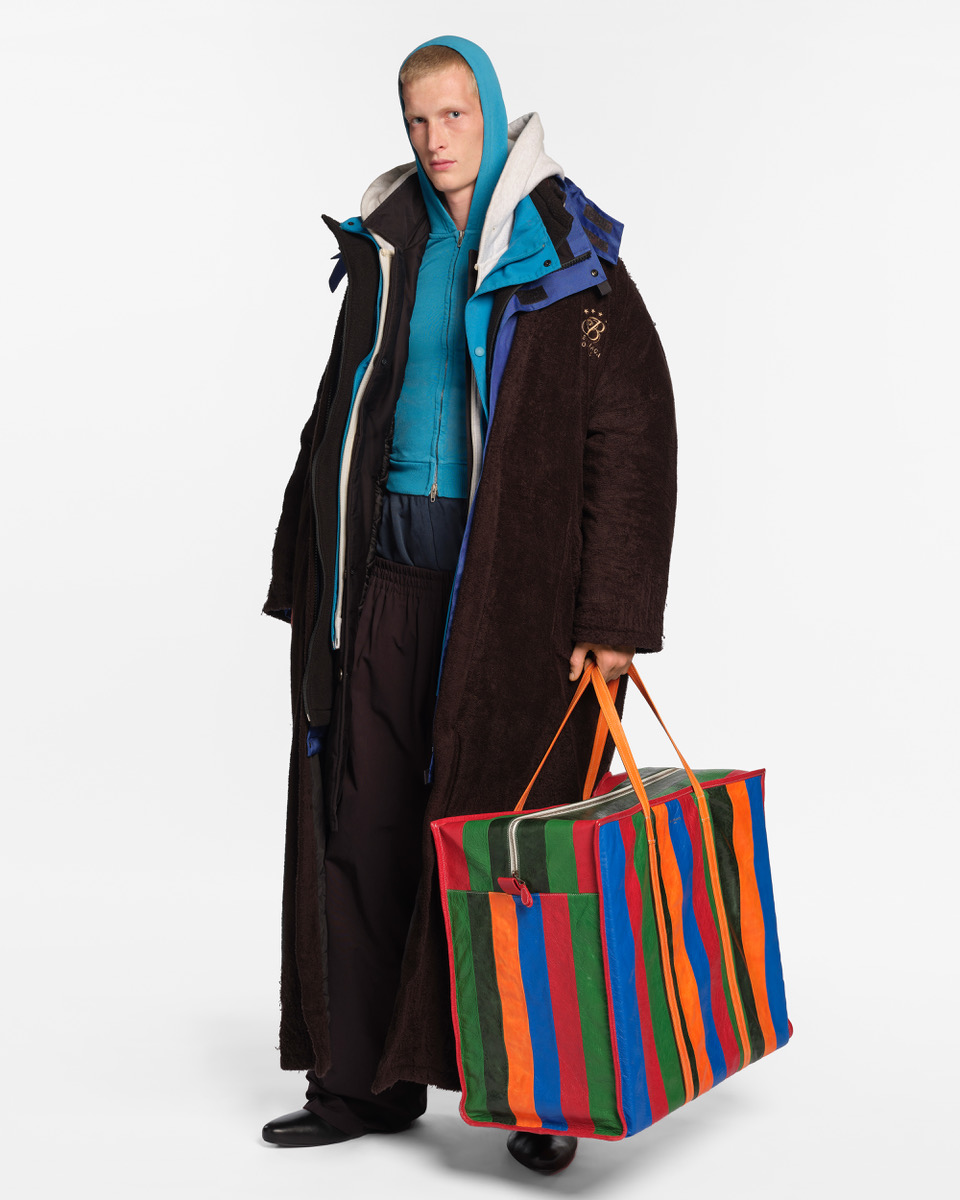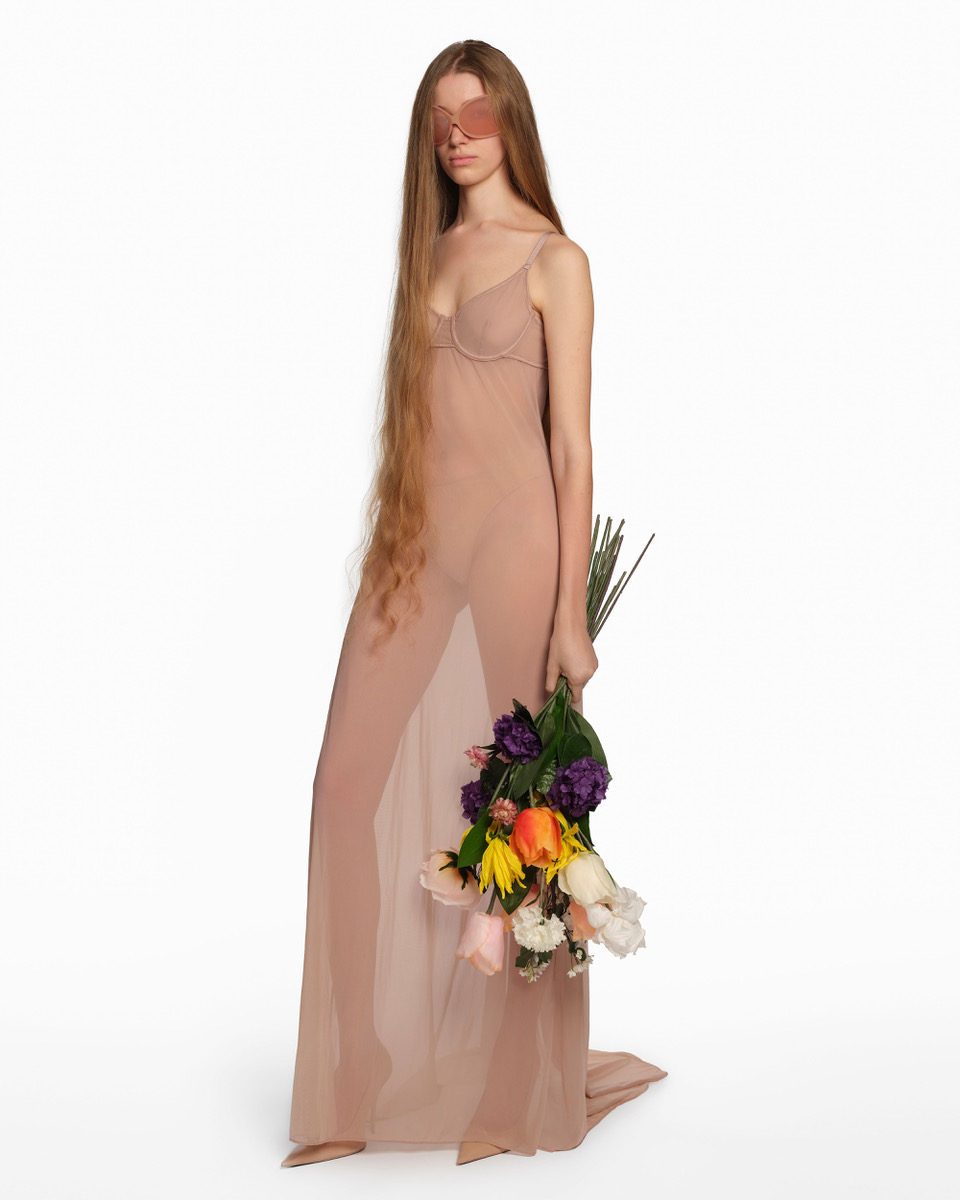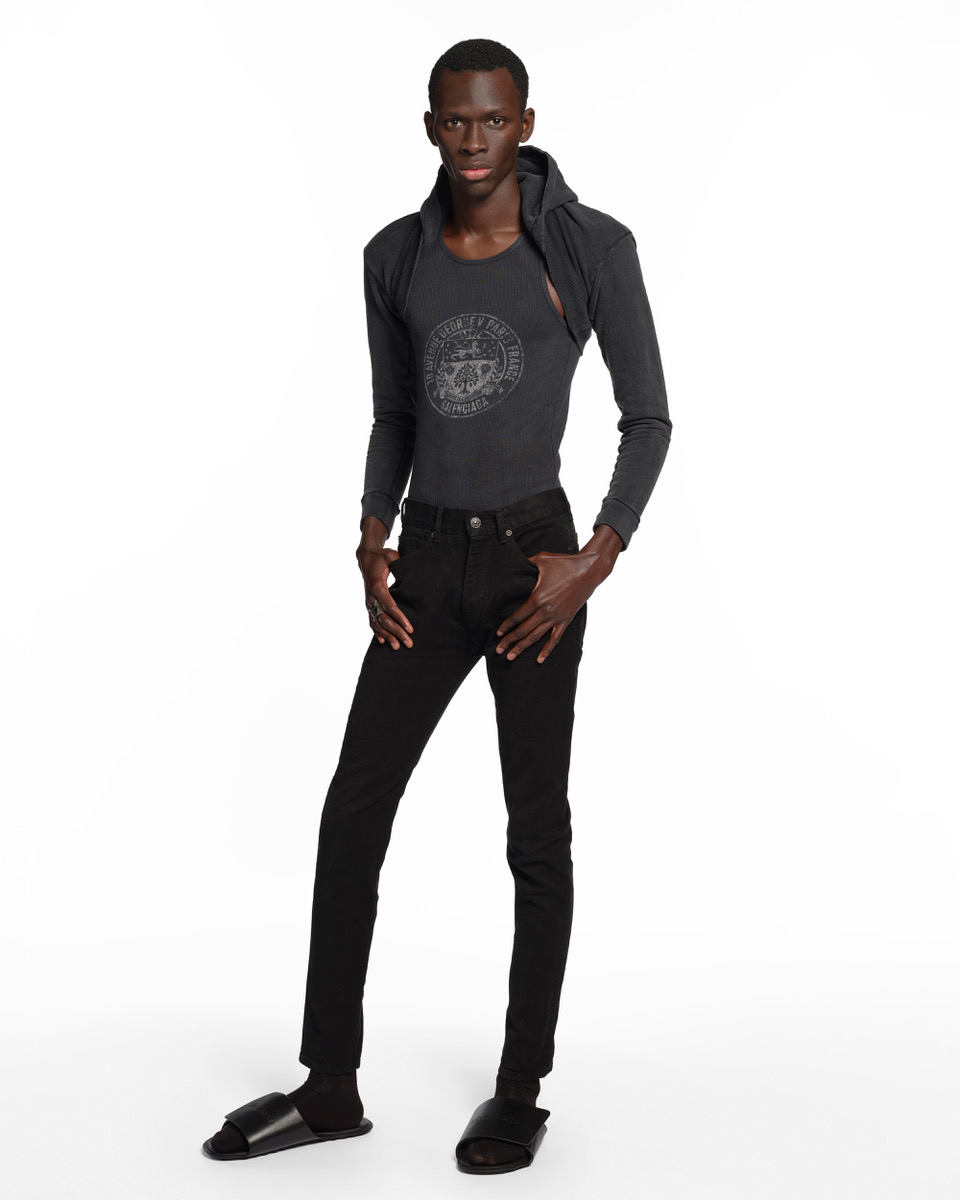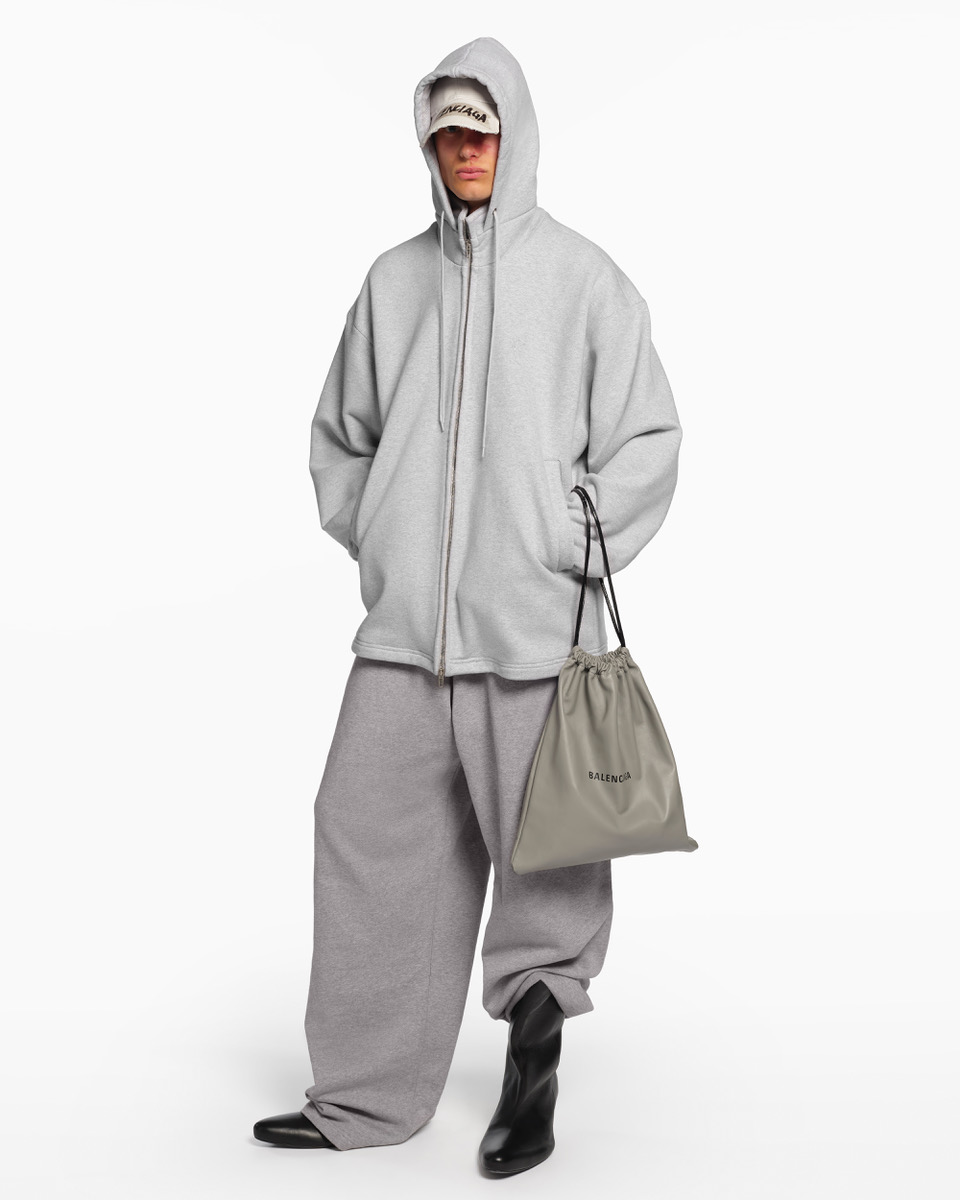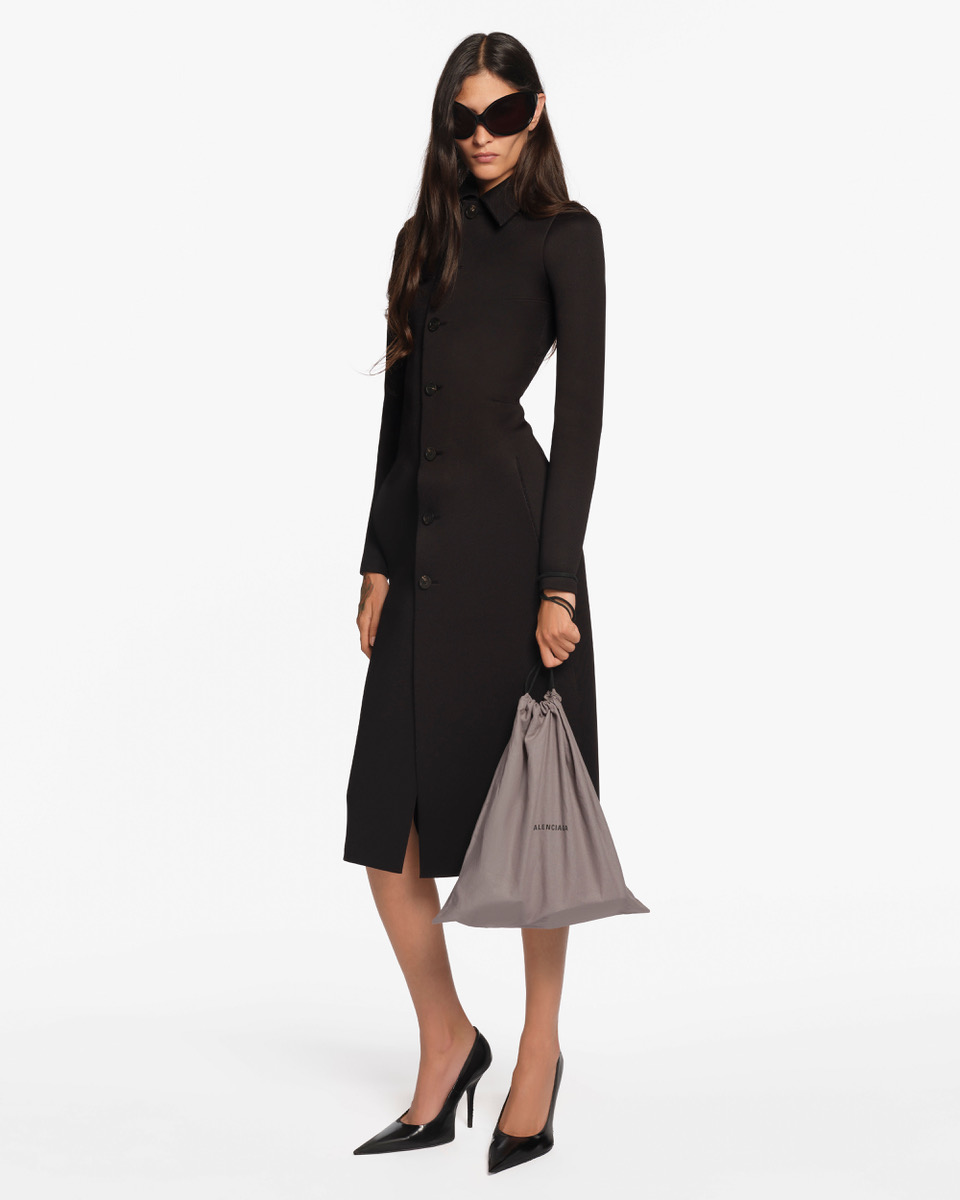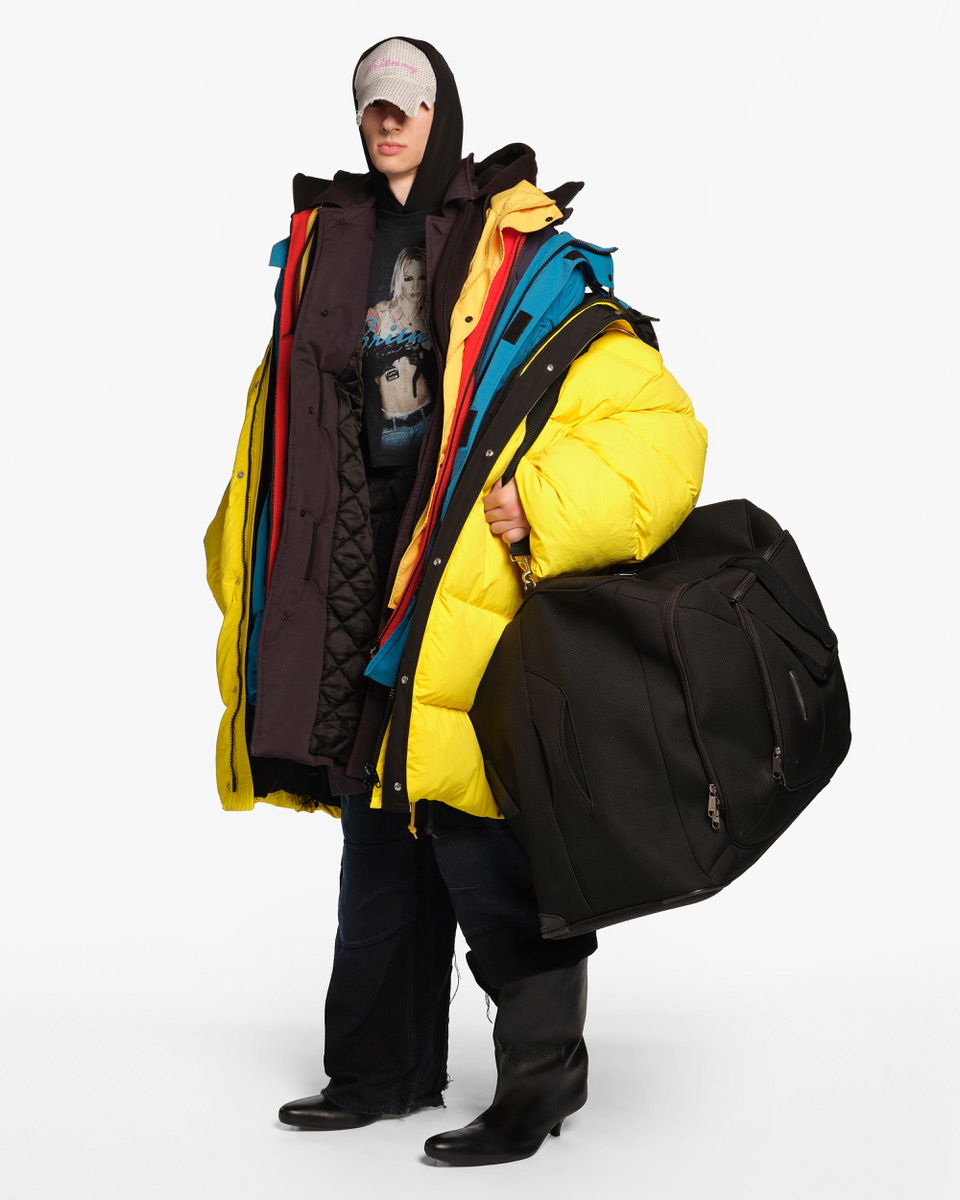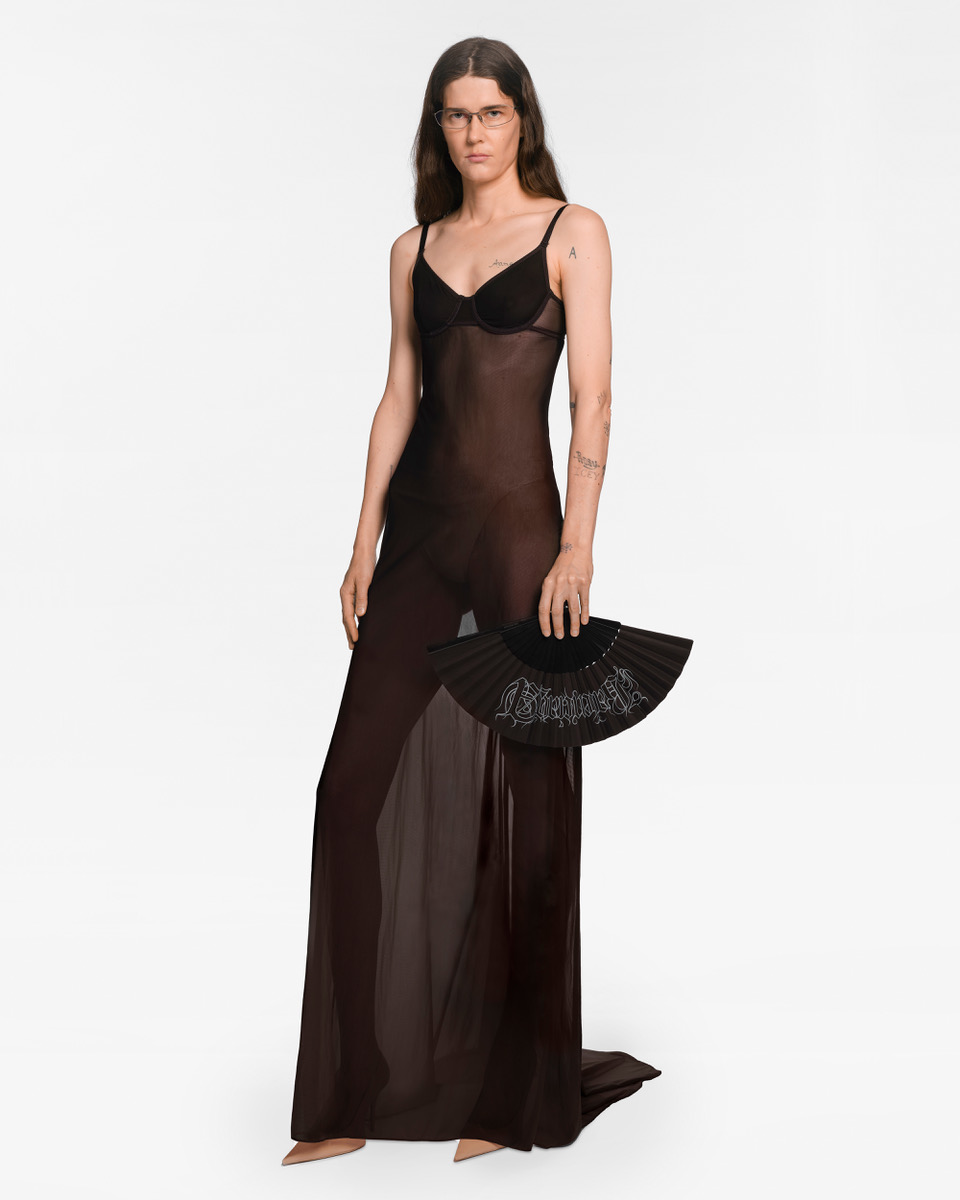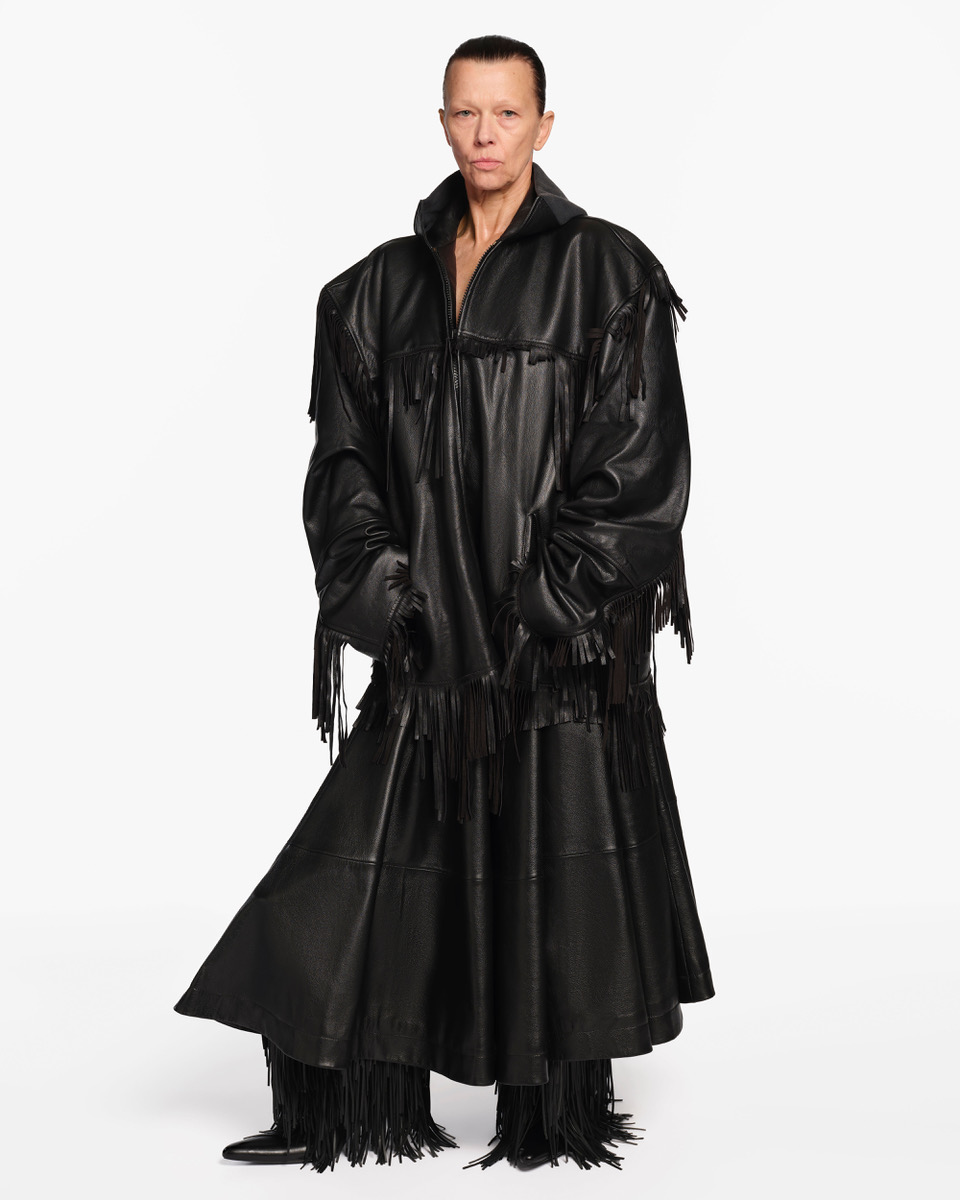ENFANTS RICHES DÉPRIMÉS' Punk Essence

Stay informed on our latest news!


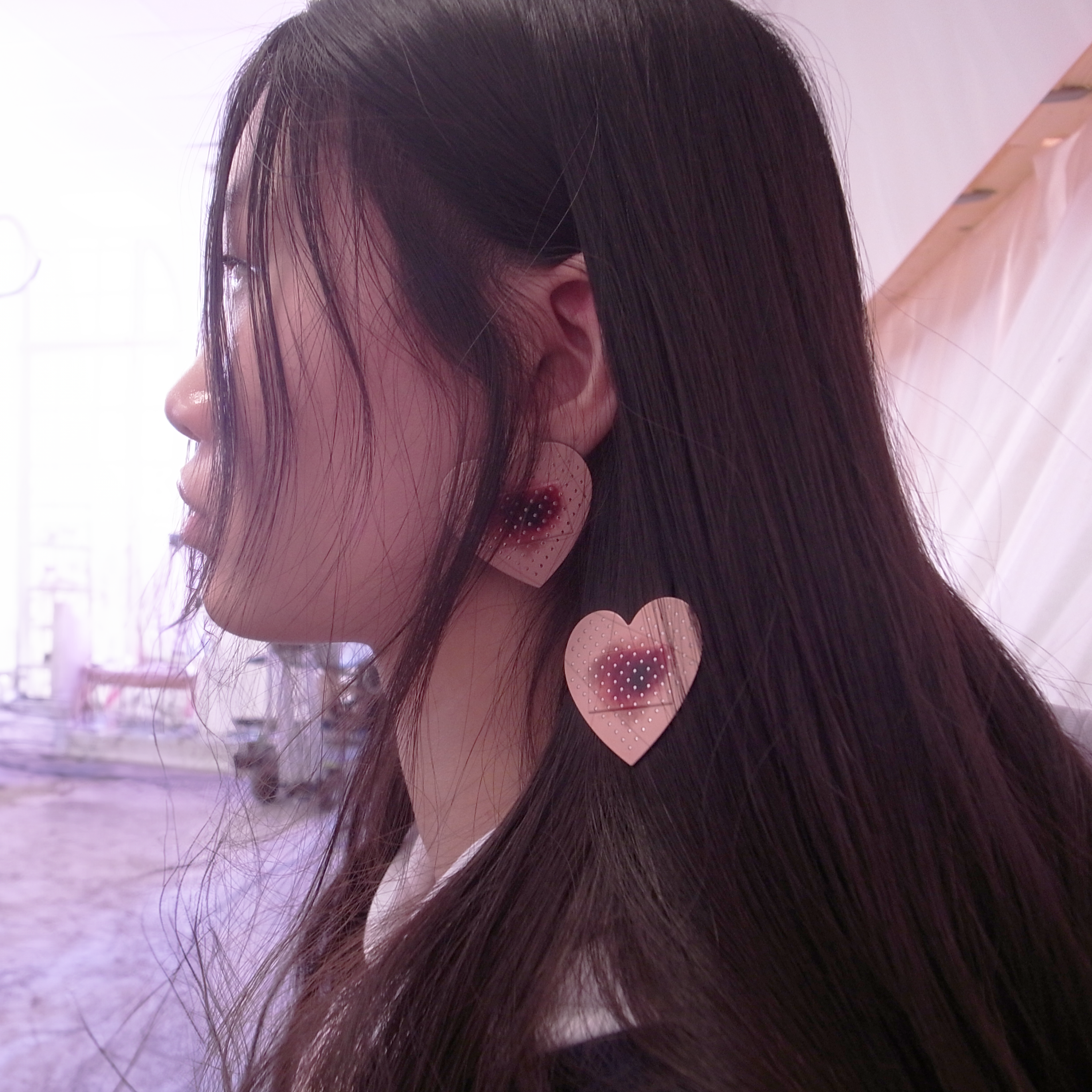
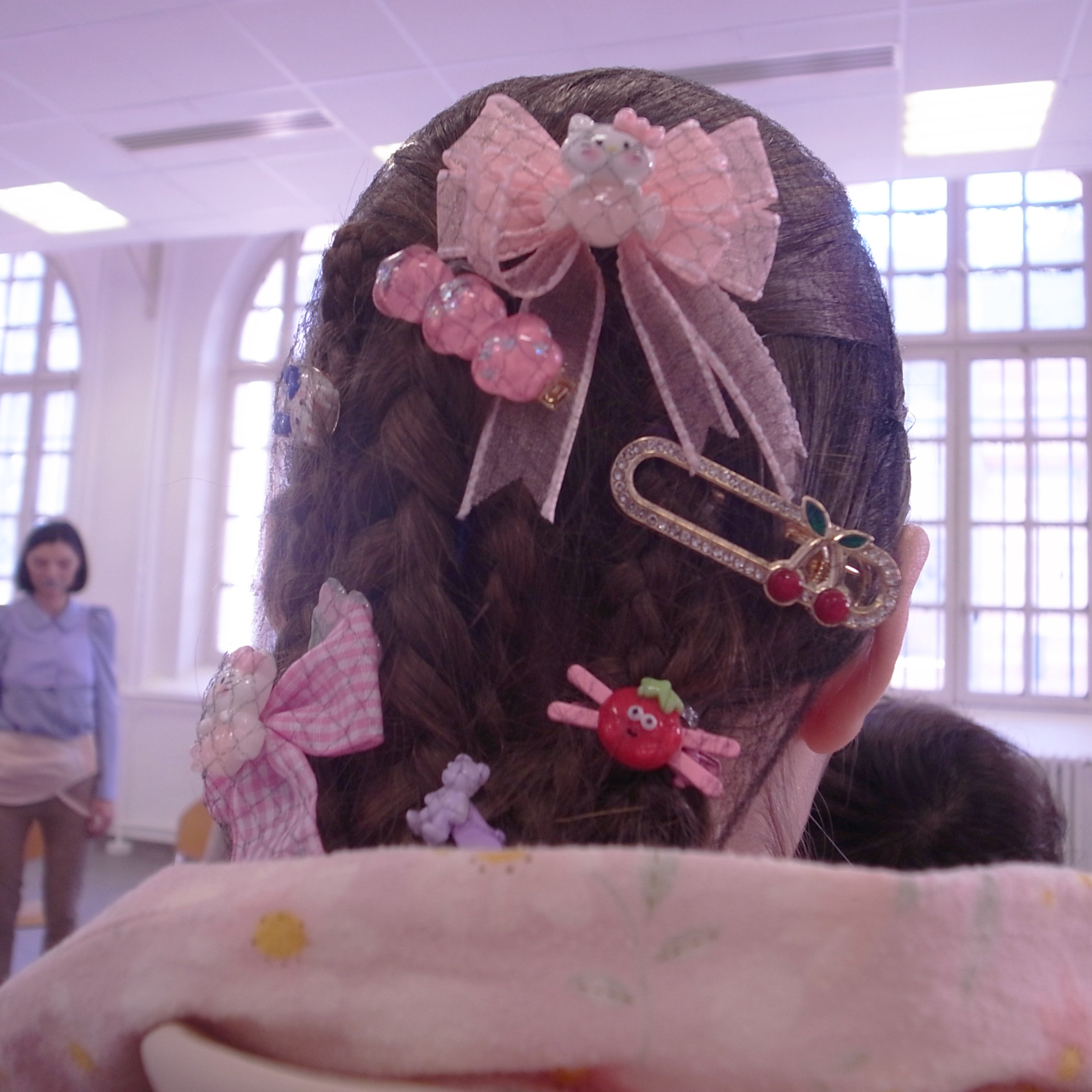

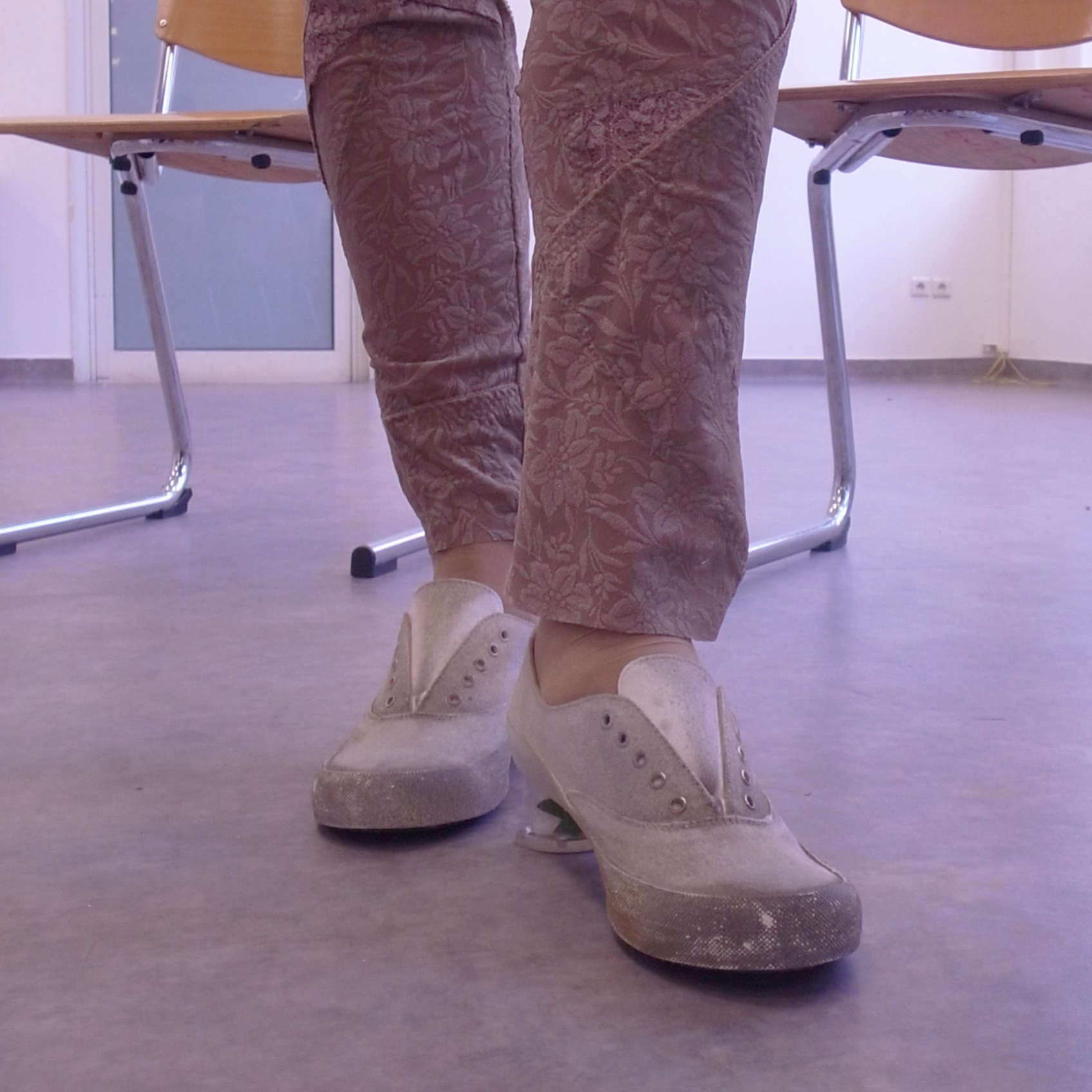

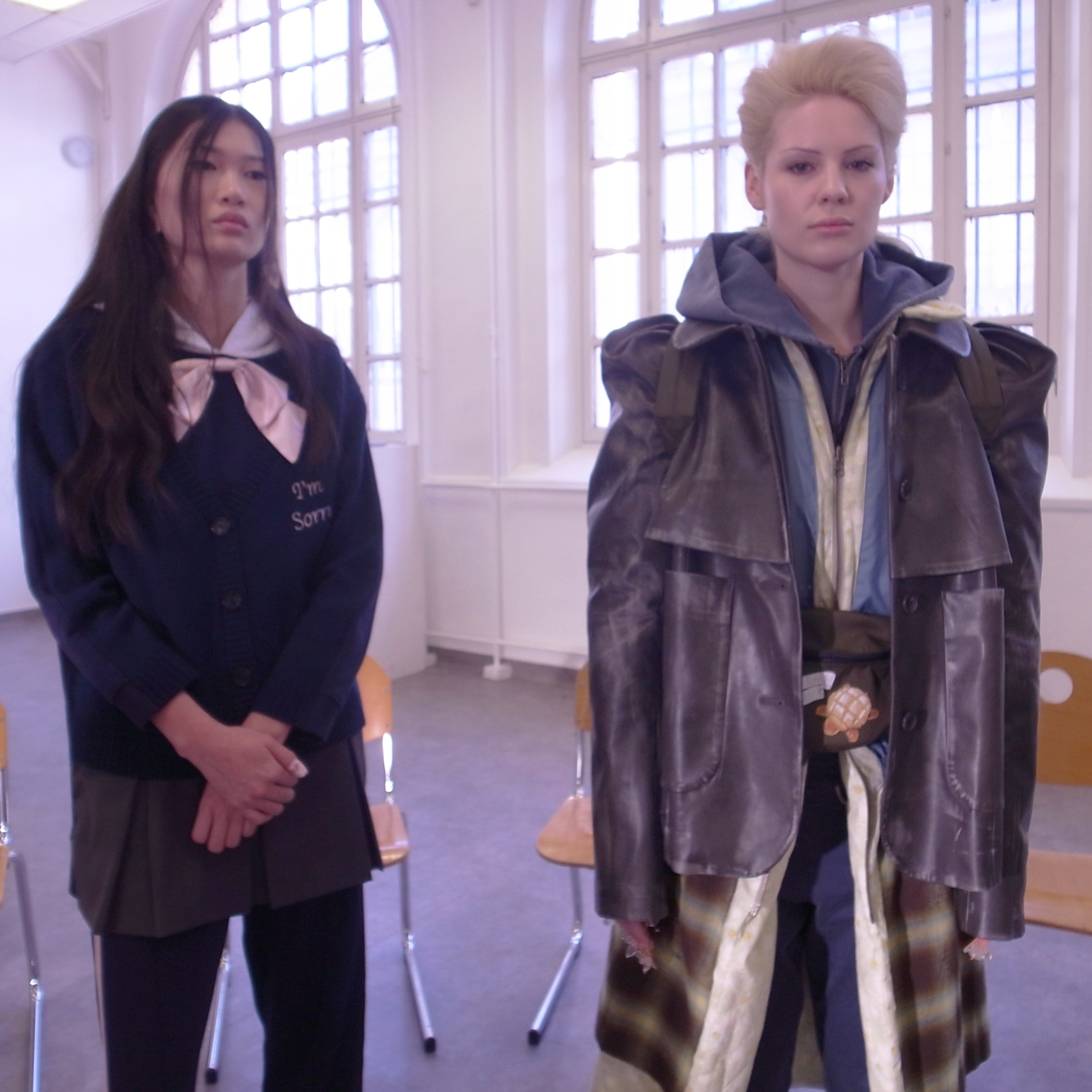
Paige Silveria: Let’s start with the latest collection you presented in Paris for AW25 titled “The Invitation,” which was a sequel to SS25’s presentation “Come Together,” held in a café in Paris. Can you tell me about what the idea was behind it?
Shueh Jen-Fang: A few characters are based on the Mormon religion. That’s a subject that I’m quite curious about. I really love the drama, Big Love. The idea is kind of like a dark joke, because religious leaders usually must be male. So for both presentations I brought in this religious girl, who you can imagine as the leader of a new cult. This latest AW collection was set in a wider space, in a school. This girl religious leader comes to the city and she discovers this new world and wants to introduce the other girls. They come to the city together from their cult’s compound to see. And the girls have religious hairstyles. Then there are other characters from the city that they meet, like the high school girl in a navy uniform that I covered with the Petra Collins collection called I’m Sorry. We also have an office lady with a gray southern suit; you can imagine her walking around New York in the 1990s with that minimal style. I'm curious about why religion is so important to people and what makes it so attractive. For example, in Mormonism, women have to dress modestly and not show their bodies too much. But they often have really beautiful hairstyles, which feels like a surprising contrast. I think it's really interesting.
I love these worlds you create. Have you ever thought about making a scripted movie?
Yeah, I really love watching movies and TV. When I have a day off, I always spend almost the whole day doing this. I’m really interested in making a proper film, but I think I need someone really smart to help me write the script. I really love creating the visuals and the characters, but I’m really not good with writing about how people speak with one another.
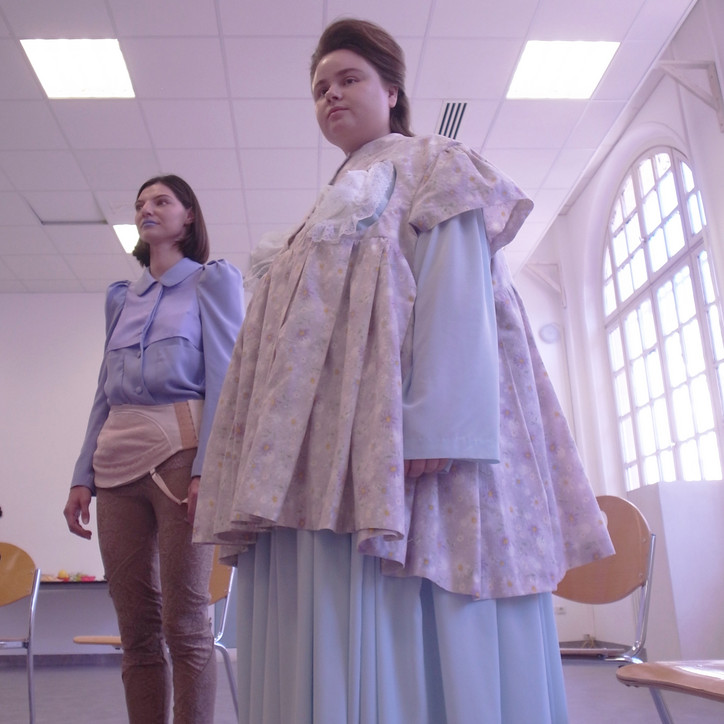
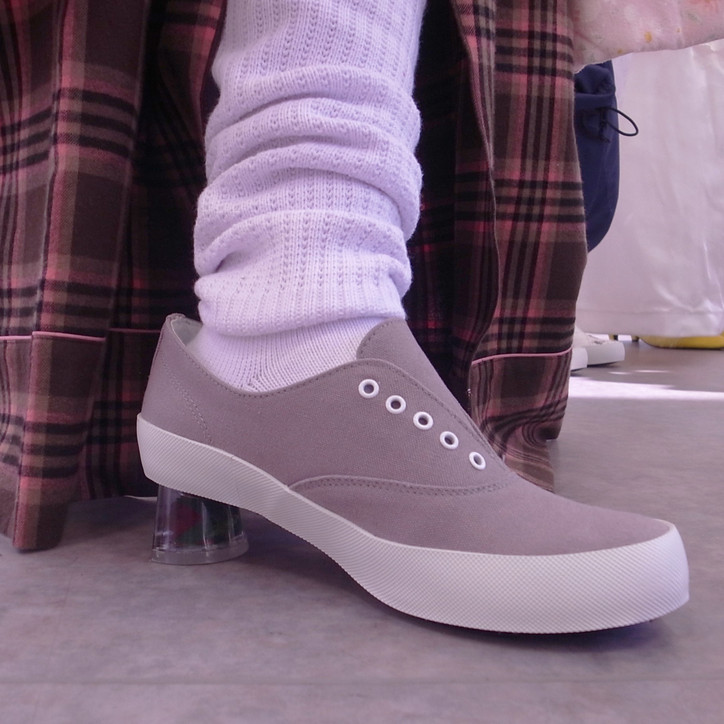
Can you talk about the evolution of the Jennyfax girl, from when you first started designing until what it is today?
When I started, it was still mainly based in Japan, so it was more about Asian subcultures. And I was a younger age, so it was more obviously cute and contained more of my Taiwan memories, as this is where I was born. But now it's different. I'm grown. So I try to make clothes that are still cute, but that also have more depth. And something that you’ll still want to wear after 10 years.
You said before that “The woman is everything. I feel like we always have to show this positive vibe, but I think it's also good to show when you're not happy. You don't have to pretend and that's really important.” How does this come across in your collections?
I had this interview before where they were asking me what the new feminine style is. And for me, the difference is not only the outside shape; it's not about being skinny or having a curve. Girls don't have to show that they are very strong or that they are really appreciating a woman's power. I think now for me, the difference is more mental. They can be free. They can be really weak. It's fine. That was the concept for my collection; you can be anything you want. You can be really happy or you can also show a negative side. It doesn't have to be hidden like before.
Let’s talk about when you were younger. I read that you were a terrible student at your Christian boarding school in Taiwan and later, when you were enrolled in art school in Belgium, you actually ditched it for two years. Why were you so against school?
I really had a teenager’s mind. I was against the system and my teachers. I’m not sure how I passed at my school in Belgium. think I just hated how teachers always told me what's best for me. They only knew me for a year—how could they really know what's right? That question always stayed in my mind.

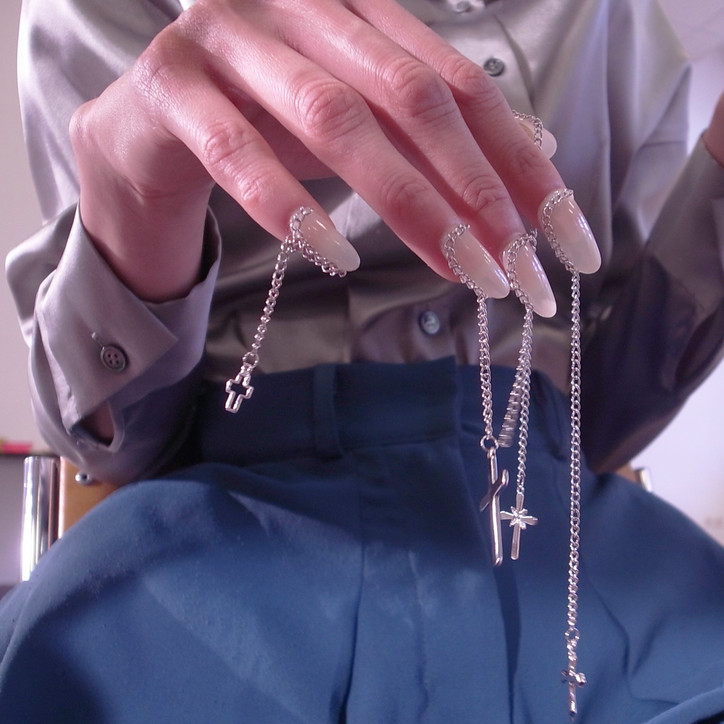
What were you doing with your time instead?
It was really sick. I would take the train every day, arrive at school, and when I saw the door of the school, I’d turn around and go back home again and just watch movies. I think at this point I was in my 20s, but I still had a bit of a childish mental soul. I was taking this 40-minute train from Antwerp to my school in Brussels. But I was always drawing on the train, for the hour and a half to and from school.
That’s wild. What was it like for you when you first went to Europe? You were in Paris first and then Belgium?
I was quite young and I was seeing everything for the first time, like snow. I had never seen it before. My eyes were wide open. It was the first time I lived in a western country .It was also very difficult because of the language. I couldn't speak English or French at that time. And I lived by myself, so everything was really tough. But I was always really interested in fashion, since I was really young. In my country, it was really difficult to get a lot of information about fashion. If I wanted to see a fashion magazine, I had to go to a bookstore a few months before and reserve it. So for me, it was really important to see what was going on outside of Asia, outside of Taiwan. I think that was a really strong energy to keep me alive while I was in Europe. I hated school, but I loved fashion. I chatted with my friends about it. In Asia, everyone only really knew the big brands like Calvin Klein or Dolce and Gabbana. You don’t see much else. So when we went to Europe, it was really interesting because I could see all the other things without that selection.
You have a big presence in Tokyo. Will you continue to show in Paris?
Yes I will. I really wanted to show in Paris before the pandemic. I did three collections with Lotta [Volkova] in Tokyo and we were ready to bring the brand to Paris. But then the whole world stopped for two years. So I had to wait. For the community in Tokyo, every few months I do a workshop to teach how to make doll clothes or any easy handcrafts, figuring out how to make it cuter with girls.
And you’ll be back in Paris in the fall to present the next collection?
Yeah, I'm thinking of doing something different for next in Paris.



With fewer than 30 guests, the event felt less like a launch and more like a moment of shared contemplation. After some time exploring the space, a conversation began between Roitfeld and Niedermair, moderated by Alex Delotch Davis. They spoke about the curatorial process behind House of Craft and how it differed from shaping editorial stories. Both emphasized how much of Dior’s haute couture history is deeply political, and how they approached the exhibition through that lens. Roitfeld shared that the experience taught her things even she hadn’t known — like how Dior’s iconic “Bar” jacket got its name: Christian Dior imagined it being worn at the bar during cocktail hour.
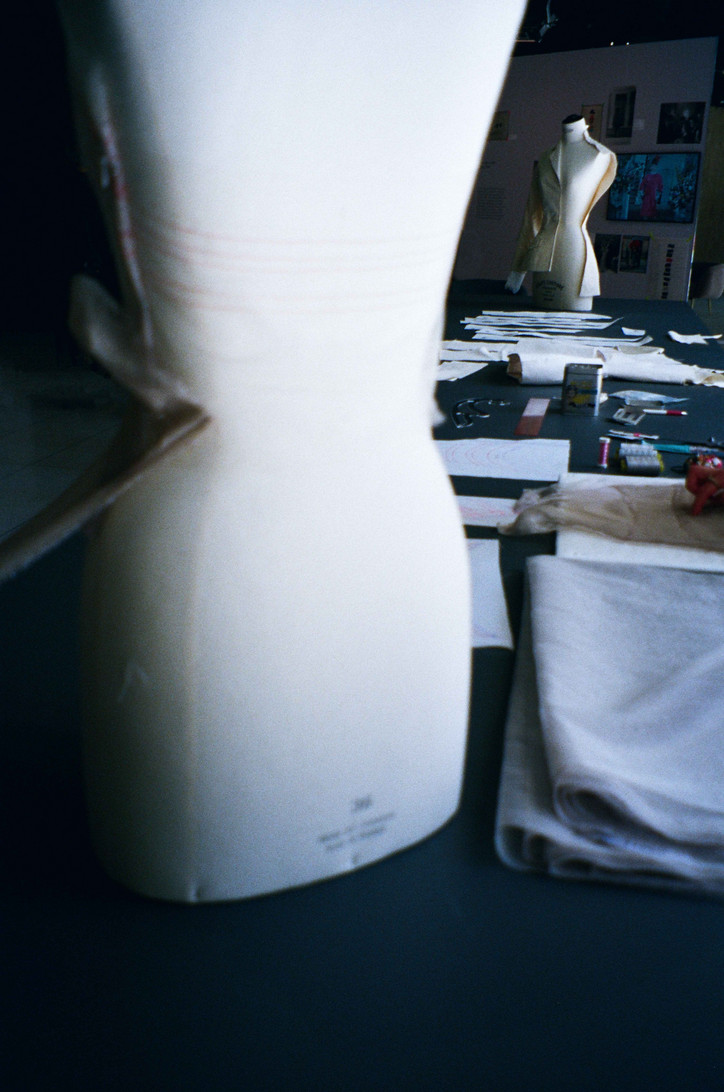
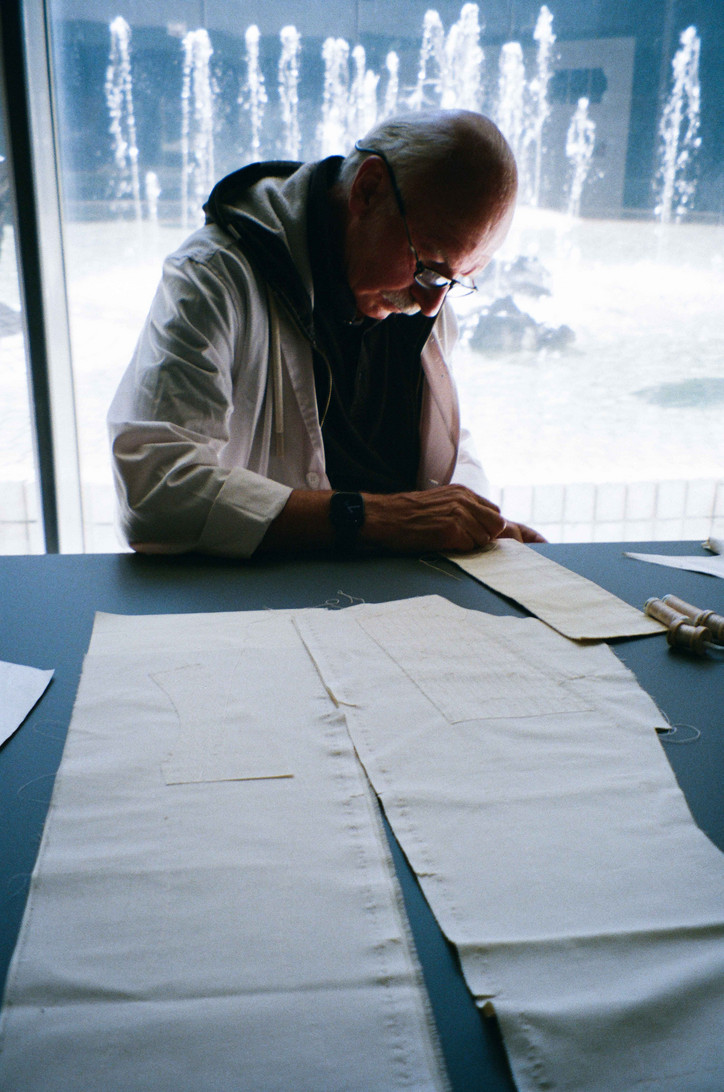
Walking through the exhibition felt like a learning experience in itself. One of the first things I discovered was that Dior had studied political science at Sciences Po — the prestigious Paris Institute of Political Studies, known for producing everyone from influential journalists to presidents. It added another layer of meaning to the show, especially after hearing Roitfeld and Niedermair speak about the political dimensions of couture.
One of the most captivating parts of the exhibition was the Atelier — a quiet corner where two artisans were at work, handcrafting Dior’s iconic ‘Bar’ suit and a pleated dress. They told me that making all the buttons for the suit takes about two weeks, and completing an entire dress can take up to three months. Their quiet focus made the labor behind couture feel immediate — and human.
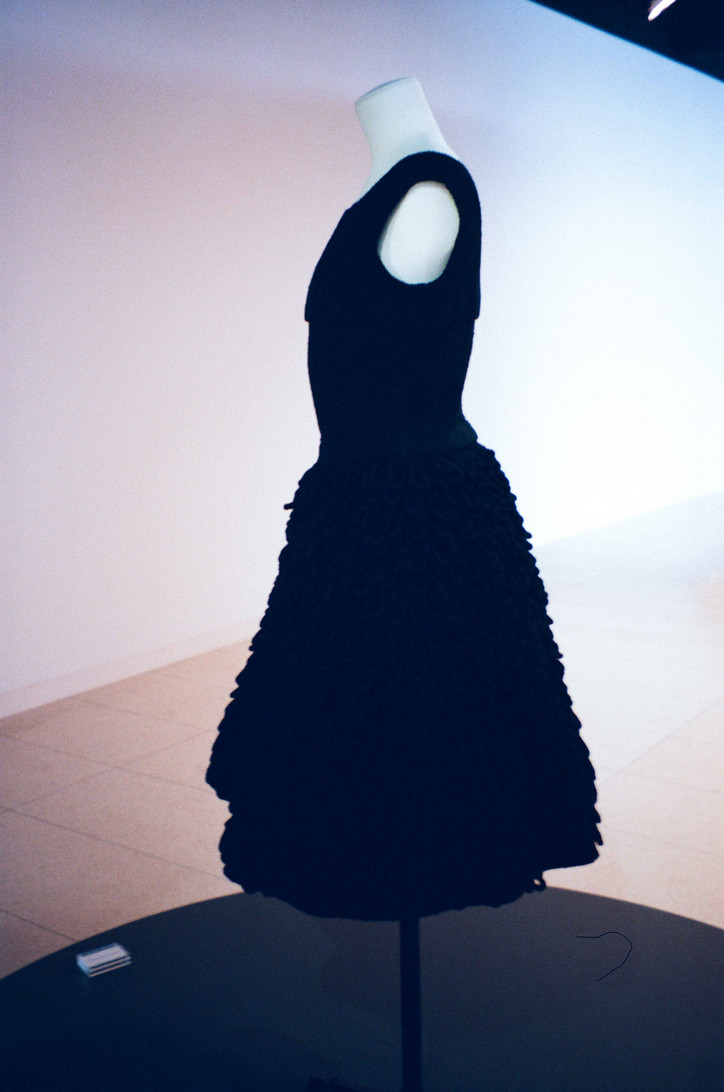
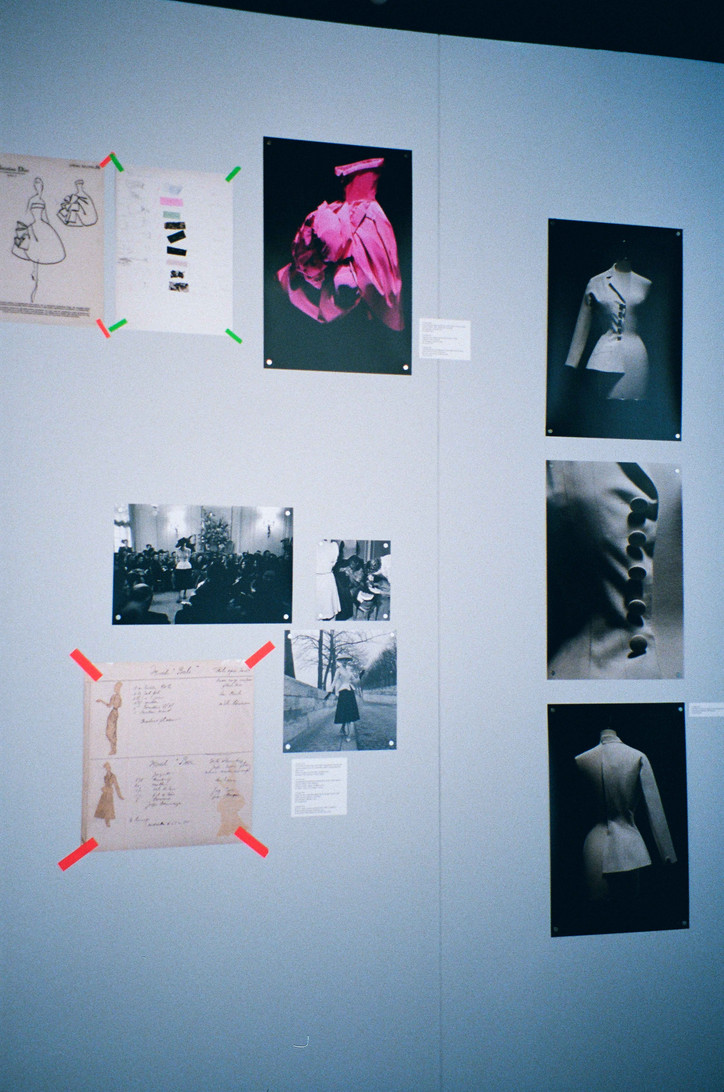
Each section felt distinctly its own, yet Niedermair’s photographs of haute couture from every creative director served as a visual thread — tying the experience together with quiet cohesion. House of Craft strikes a rare balance between past and present. At a time when democratic institutions around the world are under strain, it felt especially powerful to witness a retrospective of another kind of enduring institution — not a country, but a creative house. One shaped over decades by many voices, each offering a singular vision while contributing to a shared legacy.
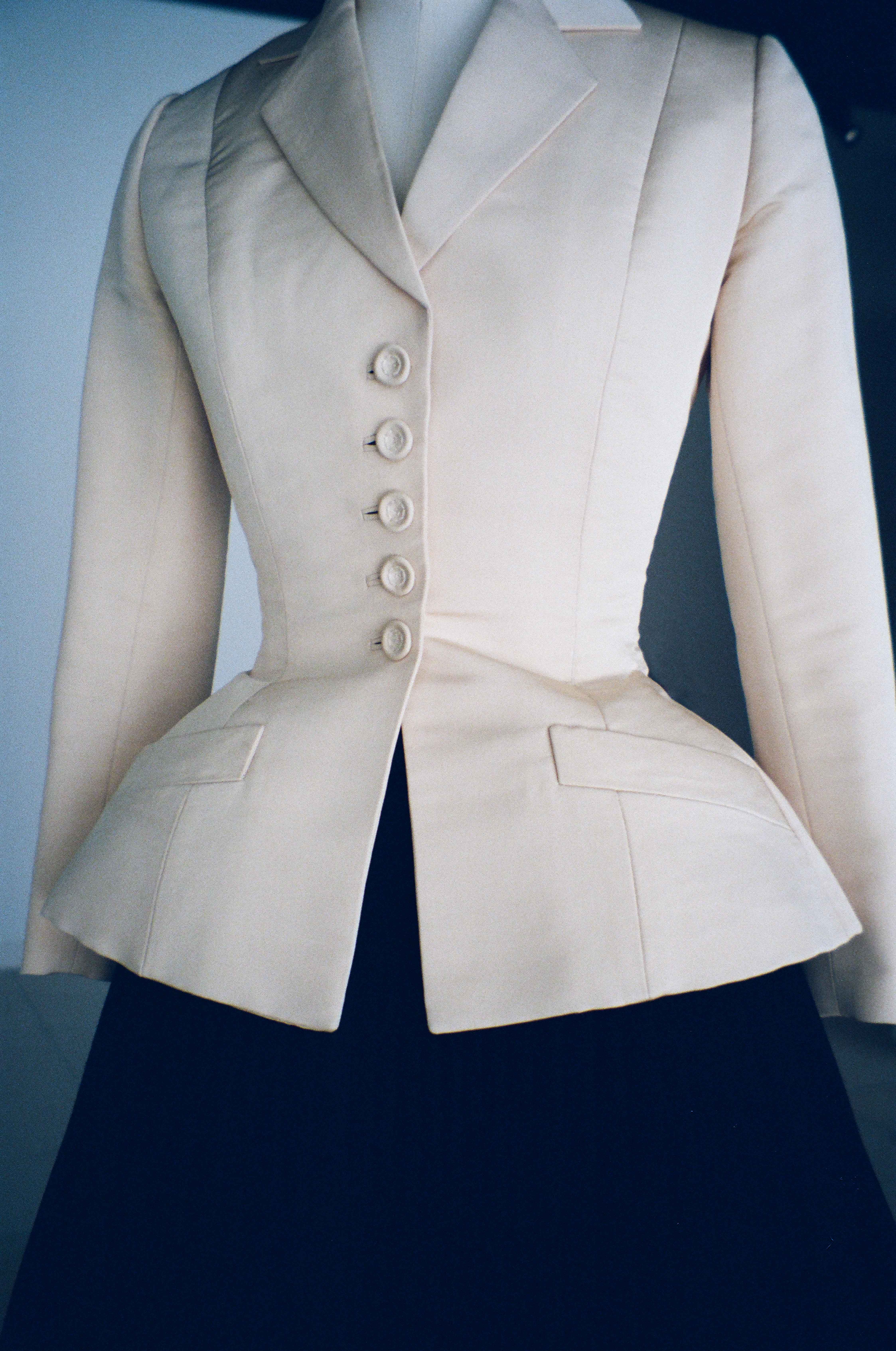
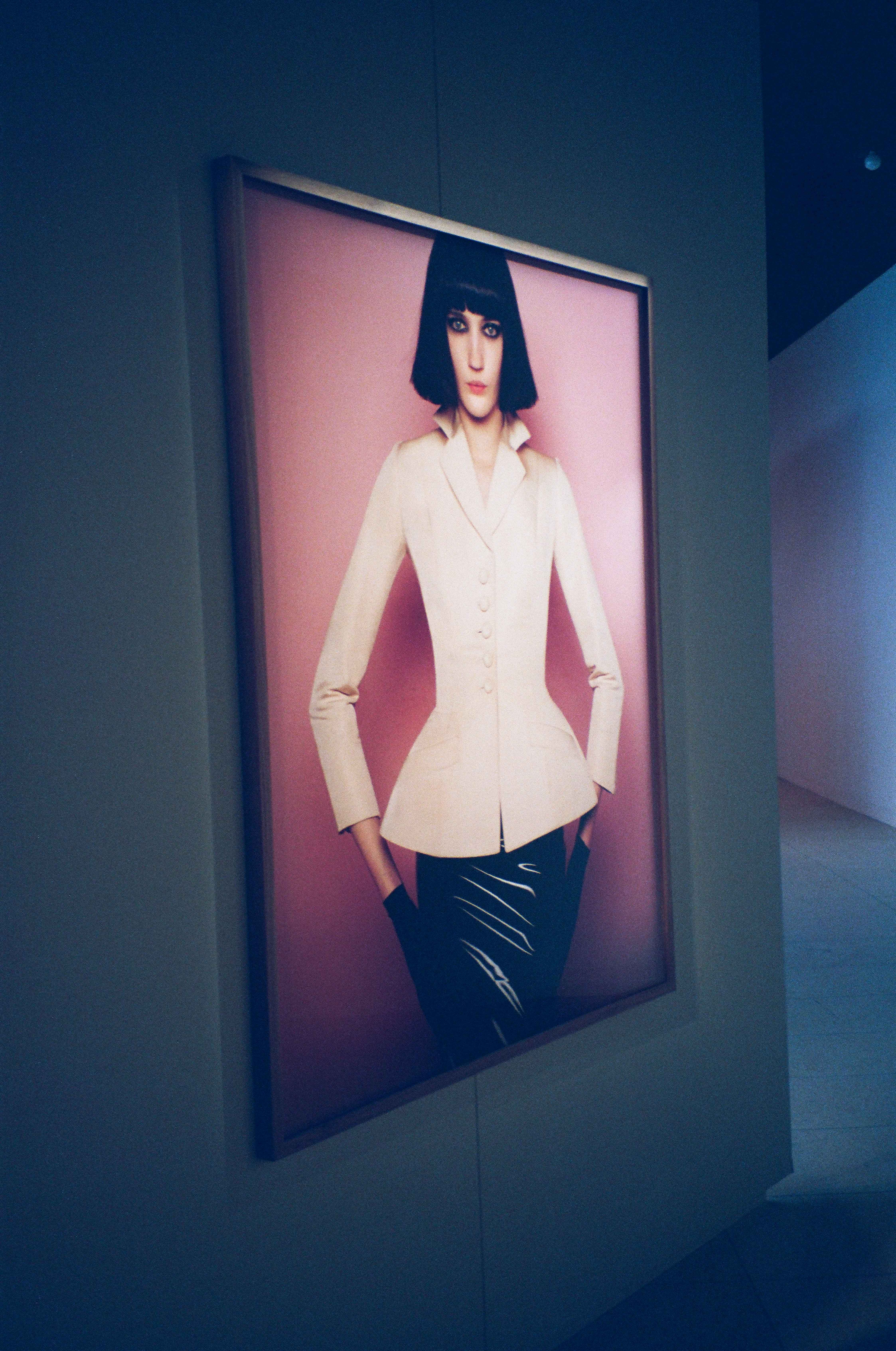
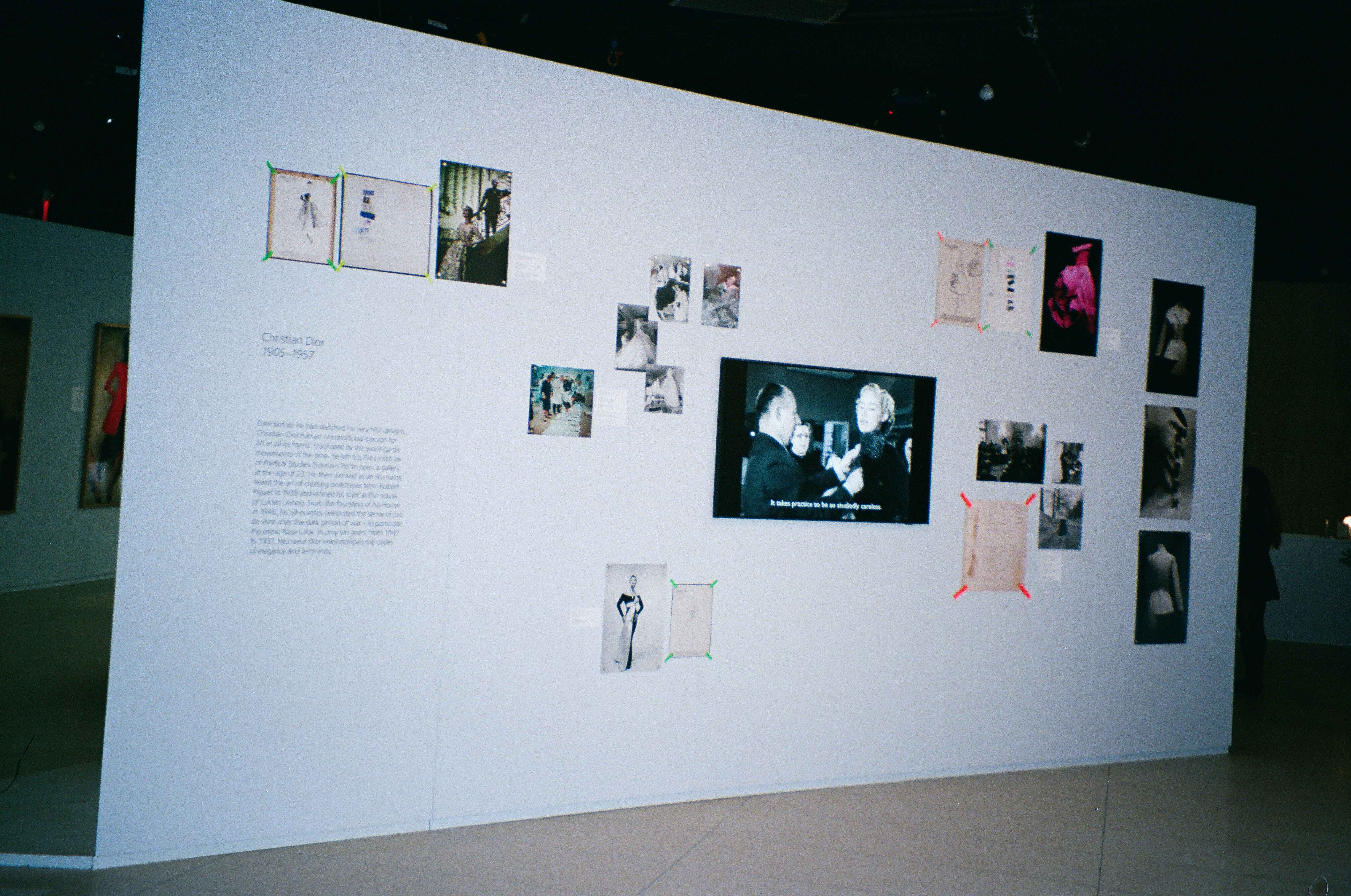
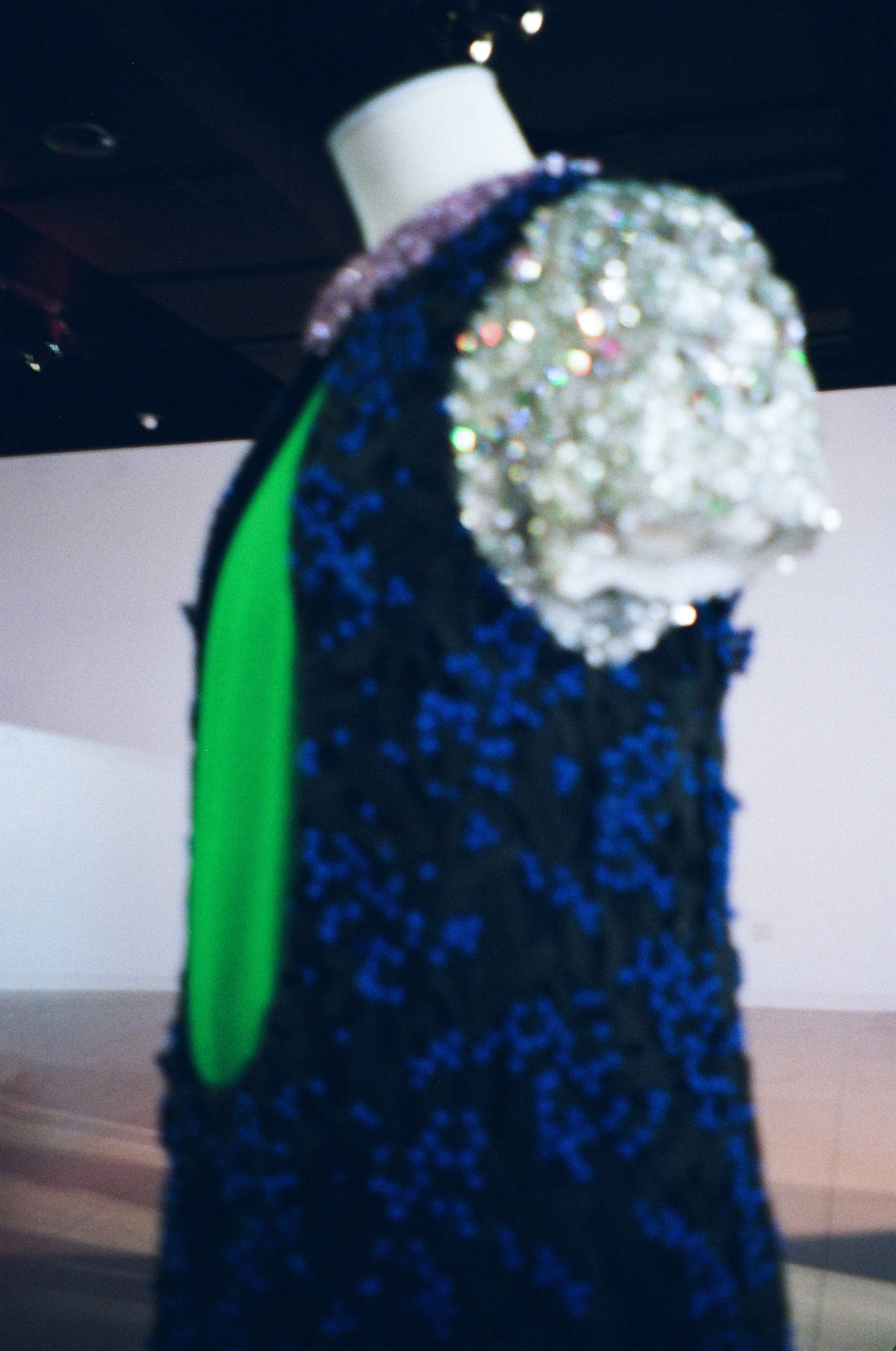

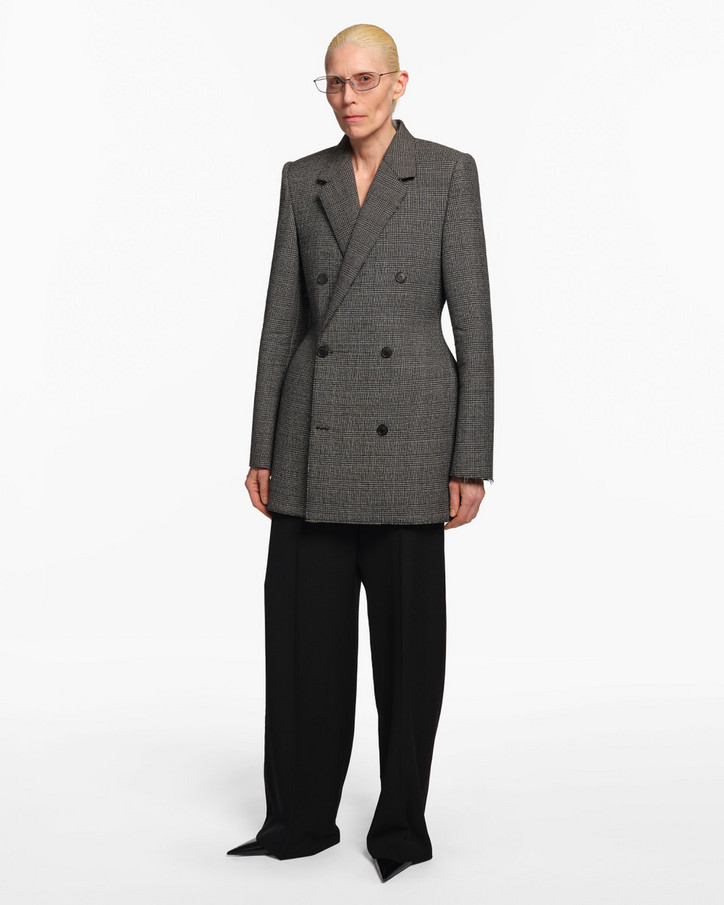
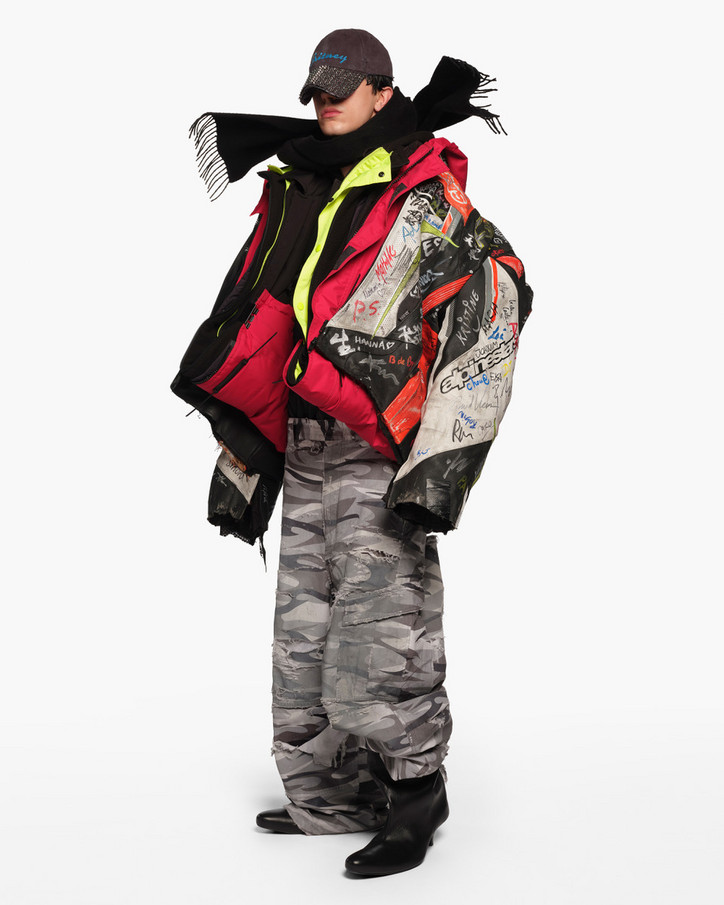

"It is the end of a wonderful era that I wanted to capture and celebrate by creating the Balenciaga “archetypes”— the people, the silhouettes, the vibes and the ideas that have all been fundamental in my work for this amazing house."
"Moving on to the next chapter, this is my tribute to the creative research and work that me and my teams have done for the past 10 years. It is also my love letter to the most loyal and fashion forward audience that we have built around the house and connected with in this creative process."
The Balenciaga by Demna Exhibition will encapsulate his decade at the house, staged at the Kering’s headquarters inside the historic Laennec landmark at 40 rue de Sèvres, where he began his tenure in 2015. The Balenciaga by Demna exhibition will be on view from June 26 through July 9 and is open to the public by registration, accessible via exposition.balenciaga.com.

